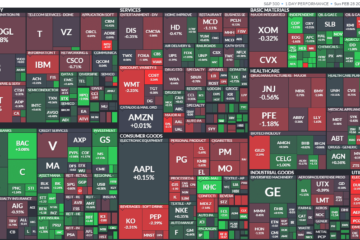ETFs. Exchange Traded Funds are a small part of the investing world. However, just because they are a small part, does not mean that they are not important. ETFs are one of the fastest growing sectors of the investing world with more than 7,000 ETFs available for trade by the end of 2020. So, what are they? Why are they so popular? What kinds of are there? And what are the benefits of them? Let’s dive right in.
(1) What is an ETF?
An ETF is an abbreviation for an Exchange Traded Fund. If a mutual fund and an index fund had a baby, it would be an ETF.
ETFs are investment vehicles that comprise several different smaller investments just like a mutual fund. When you purchase an ETF you are purchasing a tiny sliver of ownership in a whole bunch of different companies. Mutual funds operate the exact same way.
ETFs also follow some type of index or sector as well (just like an index fund). As I stated before, there are more than 7,000 in existence. Among each of them, there are several different investment objectives. They all want to achieve a specified goal. Not all investments (or specifically, ETFs) are meant to get the highest rate of return possible. Remember, the higher the investment return, the higher the amount of risk that was taken to achieve that return. Some are meant for maximizing dividend income, investing in a particular class of stocks, investing in government securities, investing in socially responsible companies, etc.
Think of investing in ETFs as like going to a really big buffet. There is something there for everyone. If you like spicy foods, pizza, tacos, sweets, salads, steaks, or any other foods you can find it at a buffet. The same is true for ETFs. There is an ETF for any appetite that you can think of.
(2) Why are ETFs so Popular?
ETFs have grown rapidly in popularity since the early 2000s. There are two main reasons for this.
The first (and largest) reason is that they are passively managed funds. This means that there is no need to pay high fees to a manager for buying and selling stocks within the ETF. This means that the fees are lower for you and I to invest in them.
Typically, they have an expense ratio (the expenses that you pay) that are usually less than half of index funds and mutual funds.
The second reason that they are so popular is because, unlike a mutual fund or an index fund, ETFs can be traded throughout the day. Mutual funds and index funds can only be traded once per day at market close. However, just like stocks, ETFs can be traded throughout the day as much as your heart desires.
(3) What Kind of ETFs are there?
There are several different kinds of ETFs. They primarily fall into two categories: Index ETFs and Sector ETFs.
Index ETFs
Index ETFs are much like regular index funds except they have the benefits described above. There are several index ETFs that follow a particular market index such as:
- S&P 500 (largest 500 companies)
- Russell 2000 (largest 2,000 companies)
- Dow Jones Industrial Average (largest 30 companies)
- Several others
Sector ETFs
Sector ETFs have become very popular in recent years. To understand what a sector ETF is, think of investing into an entire sector of the economy. For example, if you think that technology and artificial intelligence stocks are going to go way up and you want to invest in them but don’t know what specific companies to invest in, you can invest in a technology sector ETF. That will give you a sliver of ownership in several different technology and artificial intelligence stocks only.
There are several different sector ETFs. You can invest into any group of stocks that you wish simply by purchasing one sector fund. You can invest in banking and financial stocks, construction, supply chain, governmental, currency, military contractors, technology, healthcare, education, or almost anything else you wish.
(4) What are the Benefits of ETFs?
We’ve already discussed the main benefits of ETFs but it’s important to go over them one more time in case you are just skimming this article and not reading the whole thing. 😛
They can be purchased and sold throughout the trading day. This gives the owners an added amount of liquidity. You don’t have to wait until the market closes to purchase or sell your fund like you would a mutual fund or an index fund.
They have an extremely low expense ratio as compared to mutual funds or index funds. So if you like paying less fees and want to keep more of your money, ETFs might just be for you!
Final Thoughts
I love ETFs. They are really great investing instruments. They offer low fees and a great diversification. I own them in my retirement account as well as in regular brokerage accounts. They offer a lot of benefits with very few drawbacks.
As always, do some research on what ETF you are thinking about purchasing based on what your goals are.
If you are looking for a diversified investment with low fees, an ETF should probably be your bread and butter. You can accomplish nearly any financial goal by investing in a variety of ETFs.
If you have any more questions about investing, click here. And if you want articles on anything specific, let me know in the comments!
I hope that this has been helpful! If it has, please leave a comment and let me know!
Until next time!



0 Comments